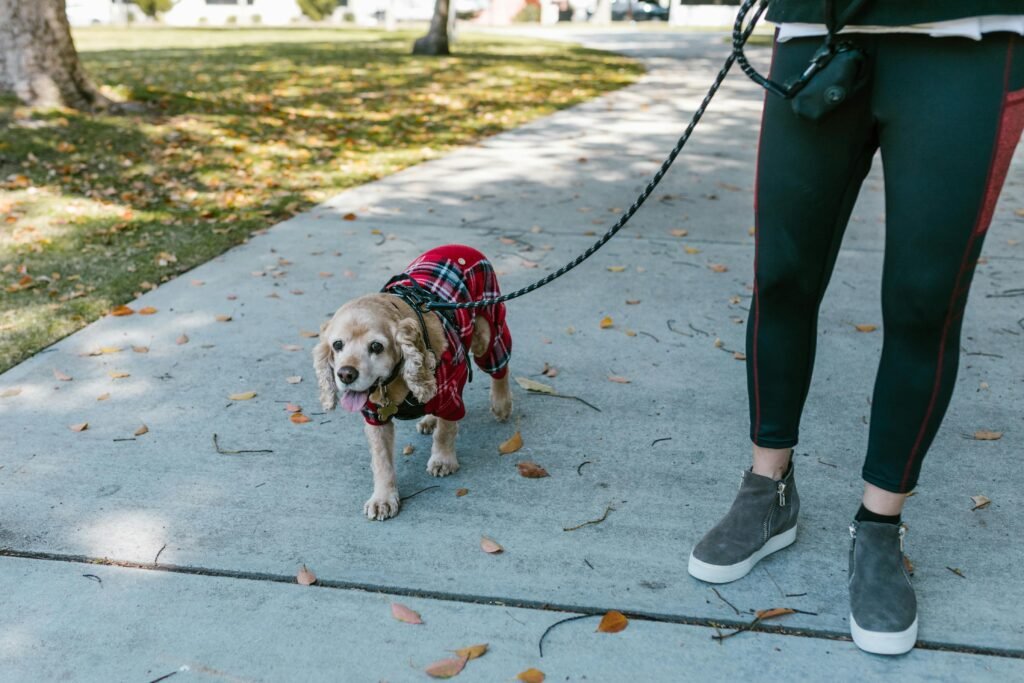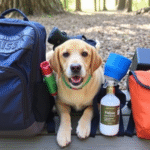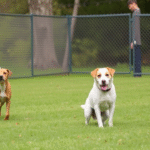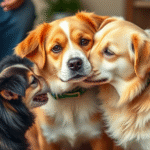Can You Train a Dog to Behave Better at the Dog Park?
Visiting the dog park can be a fun experience for both you and your dog. However, a day in the park can quickly turn chaotic if your furry friend doesn’t follow basic commands or behaves aggressively towards others. Many dog owners wonder: can you train a dog to behave better at the dog park? The answer is a resounding yes! With the right techniques and consistency, you can teach your dog to be a well-mannered park attendee.
First, it’s essential to start with basic obedience training. Teaching your dog commands like “sit,” “stay,” “come,” and “leave it” lays a solid foundation for good behavior. These commands not only make your dog easier to handle in social settings but also build a strong bond between you and your pet.
Basic Commands to Master
- Sit: One of the simplest commands. This can prevent jumping on other dogs and people.
- Stay: Essential to keep your dog in one place when needed.
- Come: An important command for safety. It ensures your dog returns to you when called.
- Leave It: Useful for preventing your dog from picking up unwanted items or interacting with aggressive dogs.
Once you’ve established the basic commands, the next step is to socialize your dog. Gradually introduce them to new environments, sounds, and, importantly, other dogs. Start with quiet parks or calm areas where your dog can be exposed to new stimuli without feeling overwhelmed.
Practice controlled introductions with other dogs. Allow your pet to observe from a distance before getting closer. This way, you can gauge their reaction and help them acclimate at their own pace. Always reward positive interactions with treats or praise to reinforce good behavior.
One crucial aspect of dog training is understanding their body language. Dogs communicate a lot through their stance, tail position, and facial expressions. Learning these signals helps you recognize when your dog feels anxious or excited. If your dog shows signs of discomfort or aggression, intervene calmly and redirect them to a different activity or move to a less crowded area.
Maintaining composure during playtime is vital. If you notice aggressive or overly dominant behavior, it’s time to step in. Use commands like “leave it” or “no” firmly but calmly. Redirect your dog’s attention by engaging them with a toy or encouraging them to play with another dog in a gentle manner.
Positive Reinforcement
Positive reinforcement is one of the most effective dog training strategies. Reward your dog for good behavior and calmness at the park. This can be through treats, gentle praise, or even a good game of fetch. Consistency is key; ensure that you give rewards every time your dog behaves well, so they learn to associate good behavior with positive outcomes.
Another effective strategy is controlled access to the dog park. If your dog tends to act out, consider visiting the park during less busy times initially. This way, your dog can gradually get used to the park environment without being overwhelmed by large crowds.
Advanced Training Techniques
As your dog becomes more comfortable at the dog park, consider introducing advanced training techniques. Activities like agility training or playdates with well-behaved dogs can further enhance your dog’s social skills. Training classes can also be beneficial. Many communities offer positive reinforcement classes specifically geared toward enhancing dog park behavior. Check out [The Association of Professional Dog Trainers](https://apdt.com) for class listings and resources.
Remember that ongoing training is crucial. Regular visits to the dog park can reinforce your dog’s behavior improvements. Make these visits a part of your routine, and continue practicing commands, even while enjoying playtime.
Ultimately, the key to training your dog to behave better at the dog park lies in patience and persistence. By focusing on foundational training, socialization, and clear communication, you can create a positive experience for your dog and those around you. For additional tips and resources, take a look at [AKC Canine Good Citizen Program](https://www.akc.org) which promotes responsible pet ownership and community dog training.
With these strategies in place, you and your dog can enjoy countless happy days at the dog park, making new friends and lasting memories along the way!
Understanding Dog Behavior in Social Settings
Understanding your dog’s behavior in social settings is crucial for creating positive experiences at places like dog parks, pet-friendly events, and even during walks around the neighborhood. Dogs, much like humans, have unique personalities and ways of communicating with each other and their surroundings. Knowing how dogs interact can help you ensure your pet behaves well in these environments. Here are some core aspects to keep in mind.
Natural Instincts and Social Behavior
Dogs are naturally social animals. They thrive on interaction with humans and other dogs. Their behavior in social settings can often be linked to instincts rooted in their evolutionary background. Key behaviors include:
- Pack Mentality: Dogs view their owners as part of their “pack.” This means they might seek guidance from you in unfamiliar situations.
- Playfulness: Many dogs express their excitement through play. This can sometimes come off as unruly behavior if not properly directed.
- Territorial Behavior: Dogs can be protective of their space, leading to potential conflicts in crowded settings.
Body Language Signals
Understanding dog body language is essential in interpreting their behavior. A dog’s posture, tail position, and facial expressions can give you a lot of information about how they’re feeling. Here are some signals to watch out for:
| Body Language | Meaning |
|---|---|
| Relaxed posture, wagging tail | Happy and ready to play |
| Stiff body, raised hackles | Fearful or aggressive |
| Averting gaze, lowering head | Submissive or anxious |
| Play bow (front legs stretched, rear in the air) | Inviting play |
Being aware of these signals can help you read your dog’s feelings and react appropriately. If your dog is expressing discomfort, you can intervene to prevent any negative interactions.
Training for the Dog Park
Training your dog to behave better at the dog park starts with understanding their behavior and social needs. Here are some strategies to improve your dog’s experience:
- Basic Commands: Teach your dog key commands like “sit,” “stay,” and “come.” This lays a solid foundation for good behavior.
- Controlled Introductions: Introduce your dog to new canines slowly. Use a leash until they show comfortable social behavior.
- Positive Reinforcement: Reward good behavior with treats or praise to encourage repeat actions during playdates.
Managing Conflicts
Even well-trained dogs can have moments of conflict at the dog park. Understanding how to handle these situations responsibly is essential:
- Stay Calm: If your dog becomes aggressive, remain calm and remove them from the situation without yelling or panicking.
- Assess the Situation: Determine whether a specific trigger (like a toys or food) is causing the problem and adjust accordingly.
- Seek Help: If conflicts arise frequently, consider consulting a professional trainer or behaviorist for personalized advice.
Remember, positive experiences at the dog park or any social setting play a significant role in shaping your dog’s behavior. Classrooms and training programs can be beneficial. Organizations like the American Kennel Club offer resources and classes for dog training and behavior.
Engaging your dog in these social settings is also an excellent way to build a strong bond between you and your pet. By understanding their behavior, you can help them navigate social situations effectively. Whether it’s meeting new friends or simply enjoying the outdoors together, a well-trained dog is a happy dog.
Explore more about dog training and behavioral insights at Dog Star Life. Learn how to create a better environment for your dog and enhance their social skills!
Essential Commands for Dog Park Success
Taking your dog to the park can be one of the most enjoyable experiences for both of you. However, ensuring that your dog behaves well in this open setting is key to a successful day out. With proper training and essential commands, you can make dog park visits fun, safe, and rewarding. Below are the essential commands that can help your dog succeed at the park.
Basic Commands for Park Etiquette
Before heading to the dog park, your dog should be familiar with a few basic commands. These commands ensure safety and effective communication between you and your furry friend. Here are the primary commands to focus on:
- Come: This command is crucial for calling your dog back to you. It’s essential when they might get distracted by other dogs or people.
- Stay: Teaching your dog to stay in one spot will keep them safe when encountering other dogs or busy situations.
- Leave it: This command is vital for preventing your dog from picking up harmful objects or engaging in unwanted behaviors.
- Drop it: If your dog picks up something they shouldn’t, ‘drop it’ helps ensure that they release the item immediately.
- Heel: This command teaches your dog to walk closely by your side, making entrance and exit at the park smoother.
Advanced Commands for Better Control
If your dog has mastered basic commands, consider teaching them more advanced commands. These will provide you additional control in a bustling dog park environment:
- Wait: This command is excellent for controlling your dog before entering or exiting the park. It helps to prevent sudden rushes.
- Go to your spot: Teaching your dog to settle in a designated area can help manage their excitement when other dogs arrive.
- Watch me: This command gets your dog’s attention focused on you, especially during distractions like loud noises or other dogs.
Socialization Skills
In addition to commands, socialization is a crucial element for park success. Dogs need to feel comfortable interacting with other dogs and people. Here are some tips:
- Start Slow: If your dog is nervous, don’t rush into the park. Allow them to observe other dogs from a safe distance.
- Observe Body Language: Teach yourself how to read your dog’s body language and that of others. If your dog seems uncomfortable, give them space.
- Practice Positive Reinforcement: Reward your dog with treats and praise for positive interactions. This encourages good behavior.
Pitfalls to Avoid
Training your dog isn’t always straightforward, and there are common mistakes to be mindful of. Here are a few pitfalls to avoid:
- Ignoring Commands: If your dog doesn’t respond to a command, taking the time to reinforce it is essential rather than allowing them to ignore it.
- Overstimulation: Too many dogs or distractions can overwhelm your dog. Monitor their behavior to gauge comfort levels.
- Inconsistent Training: Ensure that everyone in your household uses the same commands to avoid confusing your dog.
Resources for Further Training
Consider seeking guidance from professional trainers or utilizing online resources to enhance your dog training skills. Some helpful websites include:
- American Kennel Club – Provides a comprehensive guide on dog training methods.
- Amazon Books – Offers a variety of books on dog training techniques.
- Dog Training Nation – An excellent resource for tips and training advice.
By practicing essential commands and being mindful of socialization skills, you can train your dog to behave better at the dog park. A well-behaved dog not only enhances their experience but also ensures safety and enjoyment for other park-goers. Make every trip to the dog park an opportunity for learning and bonding with your furry companion!
The Role of Positive Reinforcement in Dog Training
Training your dog effectively can be a rewarding experience for both of you. One of the key strategies in successful dog training is the approach known as positive reinforcement. This training method focuses on rewarding desired behaviors, making it a popular choice among dog trainers and owners alike. By understanding the role of positive reinforcement in dog training, you can foster a healthier bond with your pet and promote better behavior, both at home and in public settings like dog parks.
Understanding Positive Reinforcement
Positive reinforcement is based on the principle that rewarding a behavior makes it more likely to happen again. This can be accomplished through various rewards, including:
- Treats
- Praise
- Toys
- Playtime
When your dog exhibits a behavior you want to reinforce, immediately following it with a reward helps your dog make the connection. Over time, this leads to improved behavior as your dog learns what actions are preferable.
Implementing Positive Reinforcement Techniques
Here are some strategies you can use to implement positive reinforcement in your dog training:
1. Timing is Key
The reward must be given immediately after the desired behavior. For instance, if your dog sits on command, offer a treat as soon as its bottom touches the ground. This immediate feedback reinforces the action clearly.
2. Be Consistent
Consistency in your commands and rewards is essential. Use the same words or signals to convey commands so that your dog understands what to expect. This reduces confusion and helps your pet learn faster.
3. Gradually Reduce the Rewards
Initially, reward your dog every time it performs the desired behavior. As your dog becomes more reliable, gradually reduce the frequency of rewards. This helps maintain the behavior over time while teaching your dog to perform without expecting a reward every time.
4. Use Varied Rewards
Your dog may become bored with the same rewards. Mix up treats, toys, and affection to keep things exciting for your pet. This variety can motivate your dog to perform even better.
Benefits of Using Positive Reinforcement
Positive reinforcement not only enhances your dog’s behavior but can also deepen your bond with them. Benefits of this method include:
- Promotes Trust: Your dog learns to associate training with positive experiences.
- Encourages Learning: Dogs are more willing to learn when they feel secure and rewarded.
- Reduces Anxiety: Positive reinforcement can lessen fear-based behaviors, making your dog more confident.
- Strengthens Relationship: A rewarding approach cultivates a more profound connection between you and your furry friend.
Common Mistakes to Avoid
While using positive reinforcement, it’s essential to avoid common pitfalls:
- Rewarding At The Wrong Time: Make sure the reward follows the desired behavior immediately.
- Ignoring Undesirable Behaviors: It’s important to redirect your dog’s attention rather than simply ignoring unwanted actions.
- Overusing Treats: Don’t solely rely on treats; use a variety of rewards to keep things engaging.
The Science Behind Positive Reinforcement
Studies have shown that positive reinforcement effectively strengthens desirable behaviors in dogs. Research indicates that dogs trained with this method exhibit higher success rates in learning tasks compared to those trained with punishment-based methods. Reinforcement not only fosters better behavior but also enhances the overall training experience for both the owner and the dog.
Additional Resources
If you want to learn more about effective dog training techniques, consider exploring resources from reputable organizations, such as:
- American Kennel Club (AKC)
- Association of Professional Dog Trainers (APDT)
- International Association of Animal Behavior Consultants (IAABC)
By incorporating positive reinforcement into your training routine, you can effectively teach your dog desirable behaviors while building a loving and trusting relationship. Your journey as a dog owner will become more enjoyable, leading to happier experiences for both you and your pet.
Common Behavioral Issues at Dog Parks and How to Address Them
Visiting a dog park can be a wonderful experience for both you and your dog. However, there can be common behavioral issues that arise in these social settings. Understanding and addressing these problems can help ensure a more enjoyable time for everyone. Below are some frequently encountered behavioral issues at dog parks and effective strategies to handle them.
Excessive Barking
One of the most common issues at dog parks is excessive barking. This can be triggered by excitement, anxiety, or the presence of other dogs. To help your dog manage its barking, consider the following tips:
- Identify triggers: Observe what specifically causes your dog to bark—other dogs, people, or certain sounds.
- Use positive reinforcement: Reward your dog with treats and praise when they are calm and quiet.
- Practice commands: Teach your dog commands like “quiet” to encourage less barking.
Aggressive Behavior
Sometimes, dogs may display aggression towards other dogs or even people. It’s essential to address this behavior for the safety of everyone involved. Here are some strategies:
- Socialization: Expose your dog to various environments, people, and other dogs from an early age to help them learn proper social cues.
- Training sessions: Enroll in obedience classes where they can learn to control their impulses and behave appropriately.
- Consult a professional: If aggression persists, seeking help from a dog trainer or behaviorist may be necessary.
Chasing and Playful Roughhousing
Some dogs may get too excited and begin chasing or roughhousing with other dogs. This can quickly lead to issues if the play becomes too aggressive. Manage this behavior by:
- Monitoring interactions: Keep an eye on your dog’s play style. If it starts becoming too intense, intervene calmly.
- Redirecting attention: Use a toy or treat to distract your dog and encourage calmer behavior.
- Encouraging breaks: Allow your dog periods of rest to prevent overstimulation.
Fear and Anxiety
Some dogs may feel overwhelmed in a dog park environment, leading to fearful behaviors such as hiding or trying to escape. To help your anxious dog, consider the following:
- Gradual exposure: Start by visiting the park during quieter hours to allow your dog to acclimate.
- Comfort and support: Bring their favorite toy or blanket to help them feel secure.
- Positive experiences: Treat them when they’re calm and engaged, gradually building positive associations with the park.
Jumping on People
Jumping is a common issue when dogs greet people. It can be bothersome, especially to other park visitors. Here’s how to address this behavior:
- Teach an alternate greeting: Encourage your dog to sit instead of jump when greeting people.
- Ignore the jumping: Avoid giving attention until all four paws are on the ground, then reward them.
- Consistent training: Reinforce this behavior both at home and in public settings.
Overexcitement
Dogs can sometimes get overly excited when they see other animals, resulting in anxious or disruptive behavior. To manage overexcitement:
- Use calming techniques: Training your dog to respond to calming commands can help mitigate their excitement.
- Practice impulse control: Incorporate “stay” or “leave it” commands to help teach patience.
- Frequent breaks: Allow your dog to take breaks away from stimulation to help manage their excitement levels.
Addressing behavioral issues at the dog park requires patience and consistent training. Encouraging positive interactions not only benefits your dog but also makes for a more enjoyable experience for everyone. For more information on dog training and behavior, you can visit reputable sites like American Kennel Club or ASPCA.
| Behavior Issue | Strategies |
|---|---|
| Excessive Barking | Identify triggers, positive reinforcement, teach commands |
| Aggressive Behavior | Socialization, training, consult a professional |
| Chasing/Roughhousing | Monitor play, redirect, encourage breaks |
| Fear and Anxiety | Gradual exposure, comfort, positive experiences |
| Jumping on People | Alternate greetings, ignore jumping, consistent training |
| Overexcitement | Calming techniques, impulse control, frequent breaks |
How Socialization Impacts Your Dog’s Park Experience
Socialization plays a crucial role in how your dog behaves at the dog park. Understanding its impact can enhance both your dog’s experience and your own enjoyment of the park. Proper socialization opens up opportunities for dogs to interact positively with their surroundings, which can help prevent anxious or aggressive behaviors.
When you take your dog to a park filled with other dogs and people, the level of socialization they have received can greatly affect how they react to this stimulating environment. Here are some key points to consider regarding how socialization impacts your dog’s park experience:
- Exposure to Different Dogs: Regular visits to the dog park allow your pet to become accustomed to different breeds, sizes, and temperaments. This exposure is essential for fostering confidence and reducing fear during encounters. Dogs that lack exposure might react defensively, making the experience uncomfortable for everyone involved.
- Learning Dog Etiquette: Socialized dogs learn how to communicate with other dogs effectively. They understand body language and are more likely to engage in healthy play. This kind of education can be vital to ensuring that your dog doesn’t inadvertently cause a conflict by misreading signals from other dogs.
- Positive Play Experiences: Through structured playdates with both familiar and unfamiliar dogs, your pet is likely to develop positive experiences associated with social outings. This can help eliminate fear or anxiety about participating in group settings, making future visits to the park much more enjoyable.
- Human Interaction: Socialization isn’t just about other dogs; it also involves how your dog interacts with humans. A well-socialized dog will be comfortable around strangers, which is important in crowded spaces like dog parks. This reduces their chances of feeling overwhelmed or aggressive when approached by unfamiliar faces.
- Reduction of Behavioral Problems: Dogs that lack socialization may exhibit behaviors such as excessive barking, destructive tendencies, or fearfulness. Regular positive interactions can help mitigate these behaviors, contributing to a well-adjusted dog who can handle various environments with ease.
Implementing a structured socialization program is beneficial if you’re looking to improve your dog’s park experience. Here are effective strategies to consider:
- Early Socialization: Introduce your puppy to various environments, experiences, and other dogs from a young age. Puppy kindergarten classes or dog-friendly gatherings can help.
- Consistent Exposure: Regular visits to the dog park should be part of your routine. Frequent interactions allow your dog to gain confidence and learn how to adapt to new situations.
- Controlled Playdates: Arrange controlled playdates with other well-behaved dogs to reinforce positive behaviors in a less chaotic environment. This approach can help your dog learn social norms.
- Positive Reinforcement: Use treats and praise to reward good behavior when your dog interacts well with other dogs or people at the park. This positive association encourages continued good behavior.
- Observe and Adapt: Take note of your dog’s behavior during interactions. If they seem overwhelmed, it may be best to take a step back until they are more comfortable.
Ultimately, the impact of socialization extends beyond the dog park. Well-socialized dogs tend to thrive in various environments, making outings more enjoyable for both owners and pets. For additional guidance on dog training and socialization, consider visiting resources such as American Kennel Club or ASPCA.
Socialization is fundamental in how your dog engages with the dog park environment. By taking proactive steps to ensure your dog is well-socialized, you are setting the stage for a more pleasant and rewarding experience for everyone involved.
Tips for Ensuring a Safe and Enjoyable Dog Park Visit
Visiting the dog park can be one of the most enjoyable experiences for both you and your furry friend. It’s a fantastic opportunity for socialization, exercise, and fun. However, ensuring a safe and enjoyable time requires some planning. Here are key tips for making the most of your dog park visit.
Know Your Dog’s Behavior
Understanding your dog’s behavior is crucial. If your dog tends to be shy or aggressive around other animals, you might need to work on their social skills before heading to the park. Observing their interactions with other dogs can help determine if they are ready for the park environment.
Choose the Right Time
Timing can significantly impact your visit. Dog parks are often busiest during evenings and weekends. If your dog is nervous or has trouble with other dogs, consider going during less busy hours, such as mid-morning or on weekdays. This allows your pet to familiarize themselves with the park in a calmer environment.
Pack Essential Items
Being prepared can make your dog park visit more enjoyable. Here’s a list of essentials to bring along:
- Water and Bowl: Staying hydrated is vital, especially on warm days.
- Leash and Collar: Use a leash to safely guide your dog before entering or exiting the park.
- Treats: Positive reinforcement is essential for good behavior.
- Poop Bags: Always clean up after your dog to keep the park clean and safe.
- Toys: A few toys can keep your dog entertained and help with socialization.
Keep an Eye on Your Dog
Constant supervision is vital while at the dog park. Watch for signs of stress or aggression from your dog or others. If your dog seems overwhelmed, you can step back or leave the area. Understanding your dog’s body language helps ensure they are enjoying the park.
Know the Park Rules
Every dog park has its rules. Familiarize yourself with these rules before your visit. Common rules include:
- All dogs must be vaccinated.
- Aggressive dogs should not be permitted.
- Dogs must be supervised at all times.
Following these rules ensures a safer environment for everyone involved.
Socialization and Play
Allowing your dog to socialize is one of the main benefits of visiting a dog park. Engage your dog with friendly dogs, and encourage playtime. If your dog pulls away from play, don’t force them. Just let them observe and engage at their own pace. Introducing your dog gradually can help ease them into interactions.
Health Precautions
Before your visit, ensure your dog is in good health. Regular vet check-ups are essential. If your dog is sick or has been exposed to contagious diseases, it’s best to stay home. Additionally, ensure they are up-to-date on vaccinations to protect both your dog and others in the park.
Know When to Leave
Recognizing when to leave the park is as important as your arrival. If your dog shows unusual signs of stress, aggression, or fatigue, consider leaving early. Keeping your dog’s experience positive is essential for encouraging future visits.
Always be friendly and courteous to other dog owners. Respecting their space and rules will lead to more welcoming interactions and a greater likelihood of building a positive dog park community.
For more information on dog training and behavior, visit American Kennel Club or browse training tips at Dog Training Nation.
With these tips in mind, you can ensure that your visits to the dog park are both safe and enjoyable for you and your furry friend. Happy park visiting!
Key Takeaway:
When it comes to ensuring your furry friend has a positive experience at the dog park, understanding and training your dog is paramount. The question "Can you train a dog to behave better at the dog park?" is critically important for pet owners who want to foster a fun and safe environment for all. Effective training hinges on a firm grasp of dog behavior, especially in social settings where dogs interact with their peers. By understanding their natural instincts, you can better navigate situations that may provoke unwanted behaviors.
One key to a successful dog park experience is mastering essential commands such as "come," "sit," and "leave it." These fundamental commands not only help keep your dog safe but can also enhance their interactions with other dogs. Practicing these commands in low-stress environments before heading to the dog park can build your dog’s confidence and responsiveness, making the entire outing more pleasurable.
Positive reinforcement plays a crucial role in dog training. By rewarding good behavior with treats, praise, or playtime, you reinforce what you want your dog to repeat. This approach fosters a more respectful and obedient dog, significantly reducing instances of rough play or aggression at the park.
It’s important to recognize common behavioral issues that may arise at dog parks, such as excessive barking or conflict with other dogs. Addressing these through consistent training and understanding can mitigate issues before they escalate. Socialization also plays an instrumental role; exposing your dog to varied environments and other dogs from an early age can improve their social skills and comfort level in a bustling dog park setting.
You can ensure a safe and enjoyable dog park visit by maintaining vigilance and setting clear boundaries for your dog. Approach the park with the mindset that you are responsible not only for your dog’s behavior but also for maintaining a respectful atmosphere for all.
By training your dog with essential commands, using positive reinforcement, and understanding their behavior and social needs, you can help ensure a better experience for both your dog and the other park patrons. Whether your dog is shy, excitable, or overly playful, patience and commitment to consistent training will yield significant improvements, transforming outings into enjoyable adventures for everyone involved.
Conclusion
Improving your dog’s behavior at the dog park is a journey worth taking. By understanding dog behavior in social settings, you can better manage your pup’s reactions and interactions. Essential commands like “sit,” “stay,” and “come” lay the groundwork for a more controlled experience, allowing your dog to enjoy their time while keeping them safe.
Employing positive reinforcement is key—this method encourages your dog to repeat desired behaviors, reinforcing good habits over time. Addressing common behavioral issues, such as excessive barking or aggressive antics, can enhance not only your dog’s experience but also that of their playmates and their owners.
Moreover, early socialization plays a crucial role in shaping your dog’s confidence and comfort levels in the park. Dogs that are properly socialized are more likely to engage positively with others, leading to enjoyable outings for everyone involved. To ensure a safe and pleasant visit, always supervise your dog and be mindful of their body language, as well as the dynamics of the park environment.
With patience and consistent training, you can significantly enhance your dog’s experience at the park, creating a happier and healthier pup. Investing time in training and regular socialization can turn dog park visits into fulfilling adventures, helping your furry friend thrive in their social settings while allowing you both to make cherished memories together.







Leave a Reply